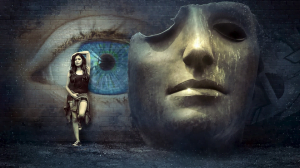Over the years, art has massively evolved, not only in style but also in terms of the chosen medium. However, certain subjects like mortality, death, cynicism, and heaven/hell are still prominent today and share similarities in the way they are portrayed.
Death, in particular, has been a favored subject for centuries. Even though every artist possesses a varied style, the way they portray, death holds some form of significance.
While death, religion, and taboo subjects have been evidently portrayed in the art for centuries, death was most apparent during the European bubonic plague from 1348 to 1350, where thousands of people died. Due to its universal implication, death was portrayed in art, literature, and culture in general.
Vanitas Paintings
These still life paintings were mainly prevalent during the medieval period and often revolved around nuanced signs of death. Elements such as skulls, funerary art, decaying flowers, watches, hourglasses, and other questionable signs were apparent in these paintings, which collectively symbolized death. With changing eras and periods, the meaning behind these still life paintings was conveyed through sculptures and theatre performances. As time passed, these were then converted into architectural developments and celebrations of folklores. Collectively, it tells us that death was and is portrayed in the same way through different media. Today, when wrongful death claims are made, people believe in changing policies. If they are unable to, they rely on professional help to gain justice.
Famous Paintings that Portray Death
Let’s take a look at five of the most famous paintings that portray the subject of death.
1. Christ of Saint John of the Cross by Salvador Dali
Painted in 1951 by famous painter Dali, this artwork portrays Jesus Christ mounted on a cross, which was inspired by the painter’s dream. The upper part of the painting represents death or agony that slowly fades into a peaceful and healing landscape and towards the light. In other words, the surrealist painter shows us how denial of self leads to union with God.
2. Skull of a Skeleton with Burning Cigarette by Vincent van Gogh
Van Gogh was known for his distinct vision and mindset, which set him apart from other artists of his time. This particular painting of his is composed in a monochromatic palette and depicts a skull smoking a cigarette. The entire picturization of this painting screams death in various ways.
3. The Death of Leonardo da Vinci by Jean Auguste Dominique Ingres
Painted in 1818, this artwork portrays that even great minds can be dead one day and achieve peace. The main subjects of the painting are Leonardo da Vinci and the king of France, Francis I, who carries Da Vinci’s body.
4. The Entombment of Christ by Caravaggio
Completed over the course of two years (1603 and 1604), this painting is another popular representation of death by Caravaggio, who portrays Christ’s body being carried by two men. It signifies the moment of realization of someone’s death and the feeling of mourning, which is immediate to death. This is one of the most popular works of Caravaggio that is widely appreciated to date.
5. Saturn Devouring His Son by Francisco de Goya
One of the famous ‘Black Paintings’, this work of art, is frightening and depicts death in distinct ways. The main subject of the painting is Saturn, who is witnessed eating one of his children with widened eyes. It is believed that Goya worked on this painting when he nearly escaped death after enduring a fatal illness.
Apart from these five famous works of art, there are many more that represent death in distinct ways but portray a similar meaning.
Contemporary Representation of Death in Art
While grim reapers, plague death, the dance of death, and protest deaths are still apparent in today’s art and cultural representation, it became more subtle with the emerging style in the 20th century. Artists no longer relied on strong symbols of death like skulls and dead flowers to distract the senses of those who looked at these pieces of art. Instead, they relied on expressive portraiture and satire.
The background and strokes of most artworks replaced these typical symbols and depicted death in various ways. For example, the simple use of black shade portrayed darkness and death. The style is further evolving in the 21st century and turning into a more minimal approach, which can be seen in works of modern artists like Andy Warhol and Damien Hirst.
Most artists relied on their own sense and perception of death, which is why we get to see varied works of art and depiction of the same subject. While a brief period of time eliminated the portraiture of death completely, it took a more nuanced form in the 20th century.












